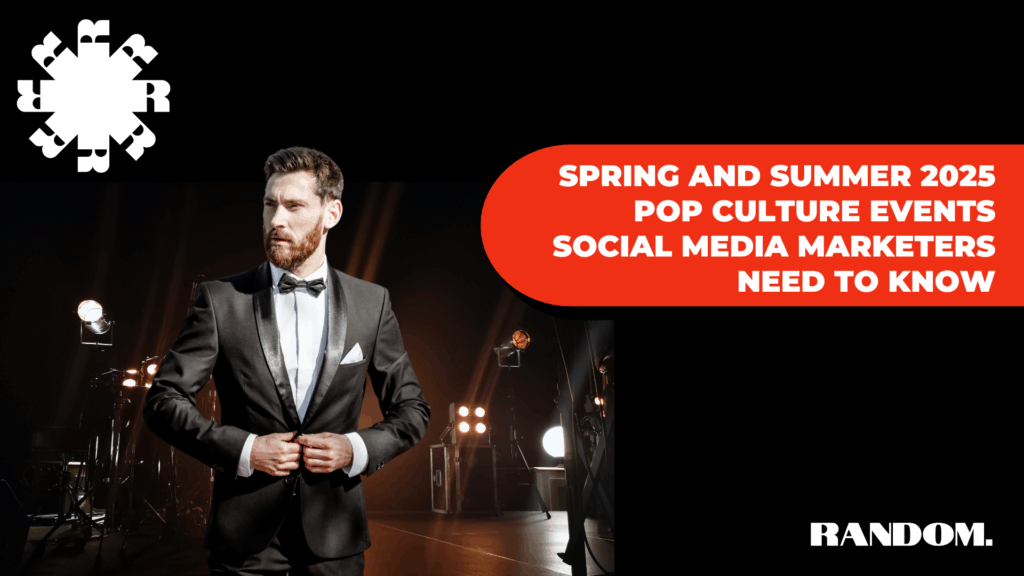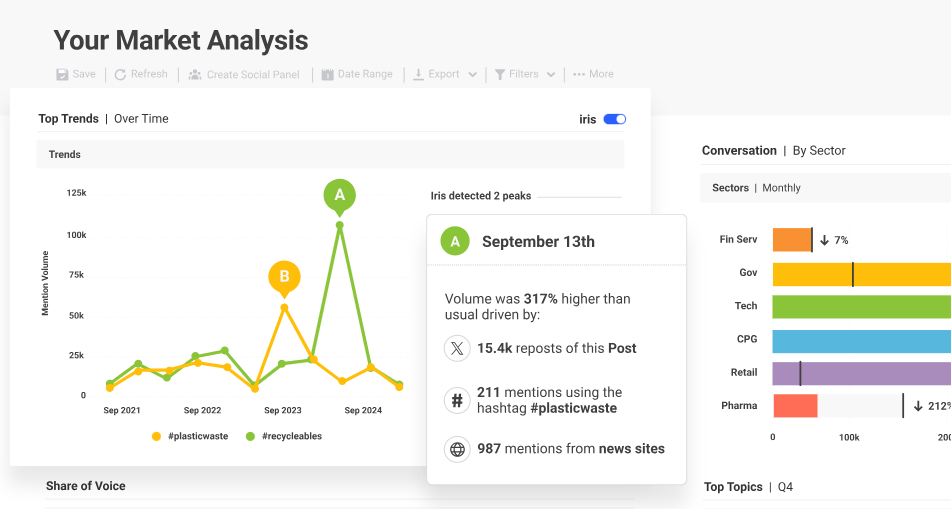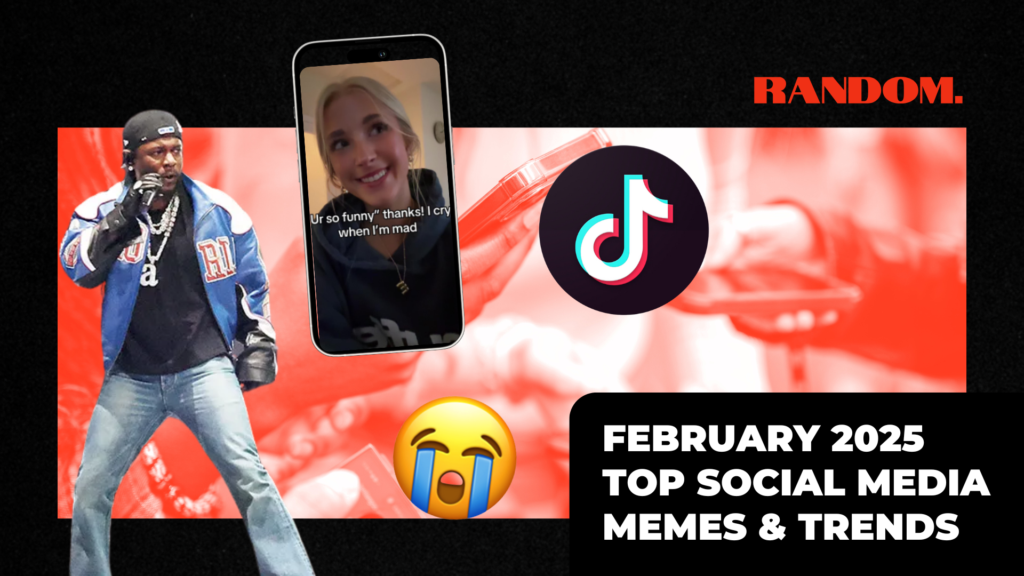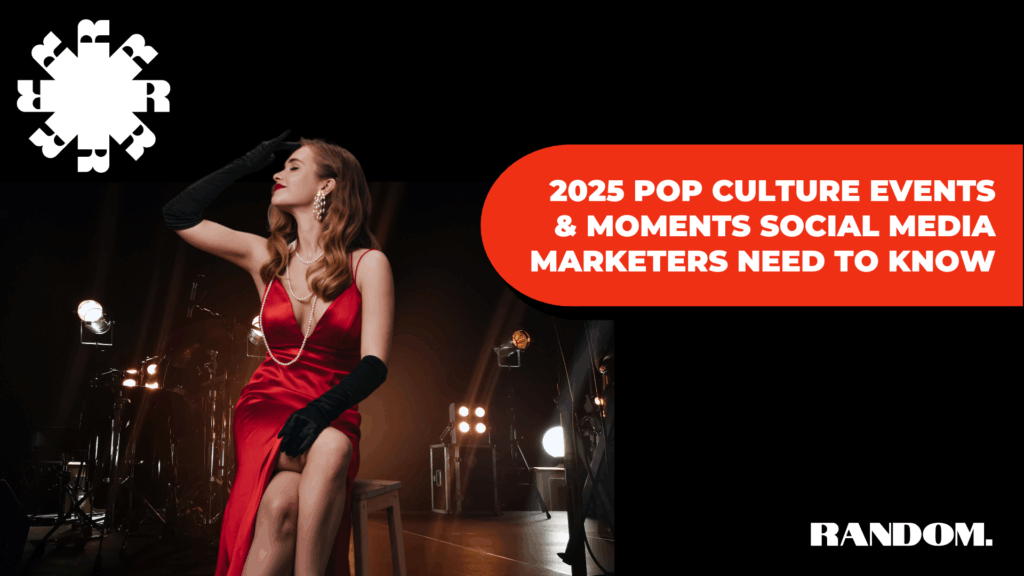Spring and Summer 2025 Pop Culture Events Social Media Marketers Need to Know

Spring and summer 2025 are packed with a lineup of exciting events and pop culture moments that social media marketers won’t want to miss. From blockbuster TV releases to award shows, these seasonal events are the perfect opportunity to tap into current trends and boost engagement.
Pop culture is the driving force behind digital conversations, memes, and trends that shape the online world. For social media marketers, staying ahead of these events is crucial to ensuring your brand remains relevant and top-of-mind.
Let’s explore the must-watch moments that should be on your radar this spring and summer.
1. Major Award Shows in Spring/Summer 2025
Award season is a goldmine for social media marketers, as fans and celebrities alike fill the digital space with hot takes, memes, and celebrations.
- Academy of Country Music Awards - May 8
- Cannes Film Festival - May 13-24
- American Music Awards - May 26
- Tony Awards - June 8
- Emmys - September 14
How to Leverage It:
- This depends on what space your brand exists in. Are you a fashion brand? Perfect–share “Who Wore It Best?” polls, commentary reels, and more. Are you in the film or music space? Share memes from the inevitable funny or awkward moments that happen. Keep your eyes peeled!
2. Major Book, Movie, & TV Releases in Spring/Summer 2025
Spring and summer are set to be thrilling times for major book, movie, and TV releases. It’s practically a guarantee at this point that these releases will make their way into mainstream moments.
Books to Look Out For in 2025:
- Never Flinch by Stephen King (May 27) – This newest novel from Stephen King is sure to be everywhere online in the days around its release. Make your predictions now–will this one become a movie, too?
Movies to Look Out For in 2025:
- A Minecraft Movie (April 4) - Yes, the hit video game Minecraft is being turned into a movie. With Jack Black, Jason Momoa, and Jennifer Coolidge all on the cast line-up, it’s going to be a wild ride.
- 28 Years Later (June 20) - A sequel to one of the zombie genre’s most iconic franchises that already has fans sharing opinions and reactions on social media.
TV Shows to Look Out for in 2025:
- The Handmaid’s Tale Season 6 (April 8) – The sixth and final season of Hulu’s show based on Margaret Atwood’s novel; it’s going to break the internet.
- Black Mirror Season 7 (April 10) – This unhinged but addictive show is returning with its seventh season on Netflix. Keep an eye out for tons of online chatter about this one.
How to Leverage It:
- Participate in memes or discussion threads, while making sure to stay relevant to your specific audience.
- Encourage user-generated content by asking followers to predict plot twists or share their favorite character moments.
3. Pop Culture Events in Spring/Summer 2025
Pop culture events and music festivals offer perfect opportunities for social media marketers to showcase their brands in creative, timely ways.
- Coachella (April 11-20)
- Met Gala (May 5)
- San Diego Comic-Con (July 24-27)
How to Leverage It:
- Create visually engaging content, like outfit inspiration or meme-worthy commentary on celebrity styles and Comic-Con reveals.
- Run exclusive social media campaigns, polls, or giveaways to capitalize on the increased traffic during these events.
4. International Awareness Days and Months in Spring/Summer 2025
Don’t forget to tap into cultural and social awareness days that spark conversations.
Must-Know Days for 2025:
- Earth Day (April 22): Brands focused on sustainability can take part in global conversations.
- Mental Health Awareness Month (May): Focus on content that emphasizes well-being, self-care, and support.
- Pride Month (June): LGBTQIA+ visibility continues to be a major initiative for brands.
How to Leverage It:
- Create content that shows how your brand aligns with these movements. But don’t force it–social media users can sniff out inauthenticity from a mile away.
5. Major Sports Events in Spring/Summer 2025
Major sporting events are unmissable moments for social media engagement.
- Kentucky Derby (May 3)
- Indy 500 (May 26)
- Stanley Cup Finals (June 13-15)
- Wimbledon (June 30-July 13)
How to Leverage It:
- Use sports-related memes to join in on trending moments, or run polls to encourage fan engagement.
Plan Ahead, But Stay Flexible
Spring and summer of 2025 are packed with exciting opportunities for social media marketers to leverage pop culture moments and elevate their brands. By adding these major events, holidays, and trends to your content calendar, you'll stay relevant, drive engagement, and build authentic connections with your audience.
But success doesn’t stop there—the key is flexibility. Pop culture can be unpredictable, and trends can pop up at any time. Make sure your content calendar allows room for agility, so you can quickly jump on the latest meme or viral moment.
Ready to ride the wave of trends? Let’s talk about crafting a strategy that keeps your brand in the spotlight all year long.









